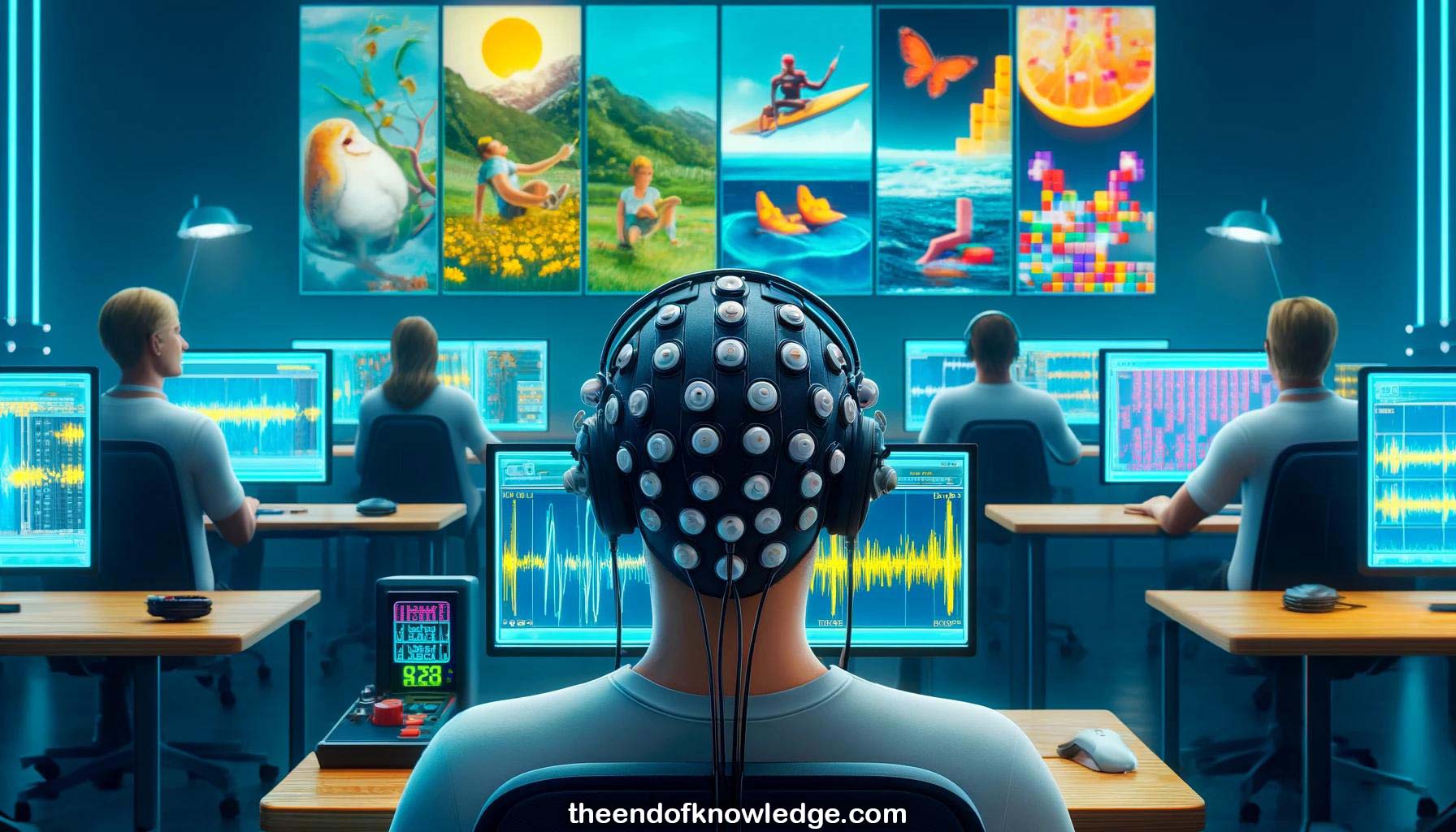 >
>
Concept Graph & Resume using Claude 3 Opus | Chat GPT4 | Llama 3:
Resume:
1.- Martin Walchshofer presents an experiment measuring concentration performance using the Unicorn Hybrid Black EEG device with 8 electrodes at 250 Hz sampling rate.
2.- Electrodes were placed mainly on the occipital area to minimize artifacts from eye movements, muscle activity, and motor areas.
3.- The experiment used 23 subjects who trained on a standardized D2 focus test. Baseline resting EEG was compared to EEG during D2 test.
4.- After training, the system was validated by repeating the test. The classifier was then applied to Tetris gameplay and video watching tasks.
5.- Subject questionnaires were used to compare perceived focus/engagement to EEG measurements. Different EEG frequency bands reflect different mental states.
6.- Theta and alpha band power changes were examined during baseline, D2 test, Tetris at different speeds, and engaging vs non-engaging videos.
7.- D2 test showed theta increase and alpha decrease compared to rest. Tetris speed impacted theta/alpha similarly. Videos showed small band power changes.
8.- Real-time feature extraction and machine learning enabled online EEG analysis. The D2 test interface highlighted correct and incorrect responses.
9.- Two test videos, relaxing landscapes and action sports, were used to compare EEG responses to engagement level.
10.- Test and training runs of the experiment paradigm were conducted to boost confidence in the results. Rest vs D2 test was clearly distinguishable.
11.- Over 90% classification accuracy was achieved across 23 subjects for distinguishing rest from D2 test, with an average of 94.6% accuracy.
12.- After training, the classifier was applied to Tetris at slow, medium and fast speeds. Different game speeds were clearly identifiable from EEG.
13.- Perceived engagement from questionnaires matched measured EEG engagement, with both increasing from slow to medium to fast Tetris speeds.
14.- Similar results were found for relaxing vs engaging videos, with a smaller but measurable difference in engagement detected by EEG.
15.- Perceived engagement aligned well with measured EEG engagement across all 24 subjects and different task difficulties, supporting the system's validity.
16.- The published study "Real-time estimation of EEG-based engagement scores during different tasks" in the Journal of Neural Engineering details the results.
17.- A live demo is conducted with a colleague, first attaching EEG electrodes and applying gel to improve signal quality and stability.
18.- Eye blinks, teeth clenching, and eyes closed are performed to observe corresponding EEG artifacts and alpha waves, confirming good signal quality.
19.- The training experiment begins with the D2 test, where the subject must click on "d" characters with exactly two marks while avoiding others.
20.- Two rounds of training are conducted, with relax phases in between. The system then generates a classifier to differentiate the two states.
21.- Over 80% accuracy is achieved for the live subject, who is then given the D2 and rest tasks again for real-time prediction.
22.- The classifier output score is monitored, rising above zero for focusing and decreasing towards the minimum during rest phases.
23.- Tetris gameplay at different difficulties and video watching tasks are then performed while monitoring the real-time EEG engagement score.
24.- The relaxing video shows scores around the minimum, while the engaging video trends more towards the maximum, but Bluetooth connection issues occur.
25.- Fast Tetris gameplay shows high engagement scores as it is overwhelming, while slow Tetris is underwhelming with scores similar to resting.
26.- Medium speed Tetris results in scores between the high and low speeds, matching the pattern observed in the 23-person study.
27.- The live demo replicates the key results from the full study, demonstrating measurable differences in EEG engagement across tasks and difficulties.
28.- Tetris was initially used for calibrating the BCI system but proved difficult due to rapidly increasing difficulty. The D2 test performed better.
29.- The presentation ends with a brief mention of the next keynote speaker Stephen Laureys and previous speaker Damien Coyle.
30.- Key takeaways: EEG can reliably measure task engagement in real-time, classifiers can be trained on standardized tests and applied to other tasks.
Knowledge Vault built byDavid Vivancos 2024